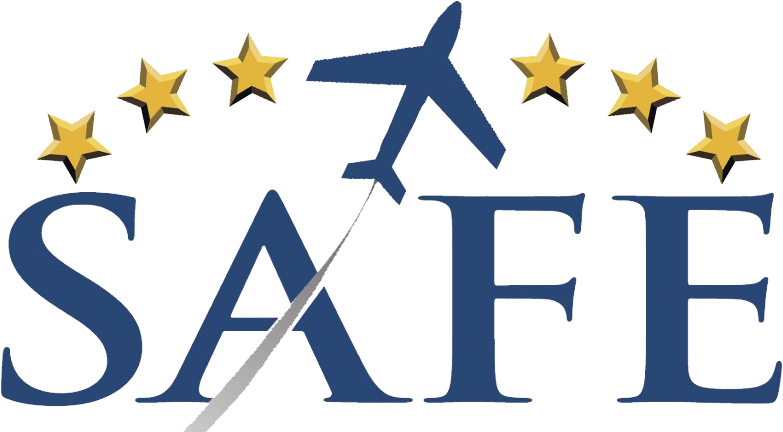 How can something as simple as takeoff and climb-out be responsible for 24% of fatal GA aviation accidents? According to NTSB data, this is the most fatal phase of flight. Perhaps it’s the very non-threatening appearance of this maneuver (“hard to miss the sky…”) that causes pilots to under-appreciate the risks, and fail to prepare thoroughly? Some simple preparation and vigilance in this area of flight can yield a big payback in your safety.
How can something as simple as takeoff and climb-out be responsible for 24% of fatal GA aviation accidents? According to NTSB data, this is the most fatal phase of flight. Perhaps it’s the very non-threatening appearance of this maneuver (“hard to miss the sky…”) that causes pilots to under-appreciate the risks, and fail to prepare thoroughly? Some simple preparation and vigilance in this area of flight can yield a big payback in your safety.
Join us on February 8th for a livestream called “The Improbable Turn” with Rod Machado. We will examine the entire takeoff/climb-out process and talk about the sometimes controversial idea of turning back in the case of an engine failure. This show is interactive (thanks to our friends at Gold SealGround Schools). Your input is encouraged (as are comments below). If anyone can shed light (and avoid argument) on this issue it is Rod Machado with his vast experience and also nuanced understanding of pilot psychology. If you register with the FAA for Master Wings credit, you will also have a chance to win a Zulu 3 Headset generously donated by Lightspeed for this show!

 My formal introduction to the “impossible turn” was during glider training. In the soaring world, on every takeoff, a pilot is required to call out “200 feet.” If a tow rope breaks above this magic altitude, a pilot executes a turnback to land on the departing runway (conditions permitting). This turnback maneuver is required in all the training courses. During flight training, a glider student will absolutely expect their CFI to pull the tow release (same as loss of power) frequently. The procedure is 45 degrees of bank at approach speed-to lessen the radius of turn. This becomes a pretty “normal” maneuver for a current glider pilot.
My formal introduction to the “impossible turn” was during glider training. In the soaring world, on every takeoff, a pilot is required to call out “200 feet.” If a tow rope breaks above this magic altitude, a pilot executes a turnback to land on the departing runway (conditions permitting). This turnback maneuver is required in all the training courses. During flight training, a glider student will absolutely expect their CFI to pull the tow release (same as loss of power) frequently. The procedure is 45 degrees of bank at approach speed-to lessen the radius of turn. This becomes a pretty “normal” maneuver for a current glider pilot.
For a power pilot that has not practiced (or even seen) this maneuver, turning back to the runway is a very bad idea. The risks are especially escalated if the pilot has not done a “pre-takeoff-brief of expected emergency actions” or the maneuver is precipitated by an unreasonable effort to “save the aircraft.” Remember, this is a pretty extreme maneuver very close to the ground. Airspeed, coordination and judgment of drift are all critical for success here with little room for error. Remember also, it requires more like 270 degrees of total turning to get back over the runway and lined up. Add to this a downwind landing (perhaps with less than full flaps) and you have a recipe for disaster.
This is why the common wisdom has defined this maneuver as “the impossible turn” and recommends landing straight ahead if your engine fails. Find a clearing and miss the big things, touching down as slowly as possible with the fuel, power and electrics off. The statistics on surviving this maneuver are very good if a pilot is mentally rehearsed in the procedure and you avoid hitting hard objects.
The real “lightning rod” question is “are there cases where a return to the airport is a reasonable choice?” One of my aviation heroes, Barry Schiff speculates a turn back can be a viable option as does Rod Machado-but only in certain well-defined cases. The AOPA has a program dedicated to this question. It is certainly a question every pilot should answer for themselves in case they encounter this challenge. Please join us for that discussion.
The [critical] difference between success and failure is not only having sufficient altitude, but knowing how and when the turnaround maneuver can be performed with relative safety [and being pre-briefed-“locked and loaded”-for this eventuality].
 Register with the FAA Safety website (for WIngs *and* you might win a headset) and join us at GoldSealFebruary 8th so we can all share our experiences and hopefully develop a personal plan that is comfortable and assures greater safety on takeoff and climb out. More next week!
Register with the FAA Safety website (for WIngs *and* you might win a headset) and join us at GoldSealFebruary 8th so we can all share our experiences and hopefully develop a personal plan that is comfortable and assures greater safety on takeoff and climb out. More next week!
Please “follow” our SAFE blog to receive notification of new articles. Write us a comment if you see a problem or want to contribute an article. We are always seeking more input on aviation improvements and flight safety. There are many highly qualified aviation educators out there! If you are not yet a SAFE member, please Join SAFE and support our mission of generating aviation excellence in teaching and flying. Our amazing member benefits alone make this commitment worthwhile and fun. Lastly, use our FREE SAFE Toolkit App to put pilot endorsements and experience requirements right on your smart phone and facilitate CFI+DPE teamwork. Working together we make safer pilots!
